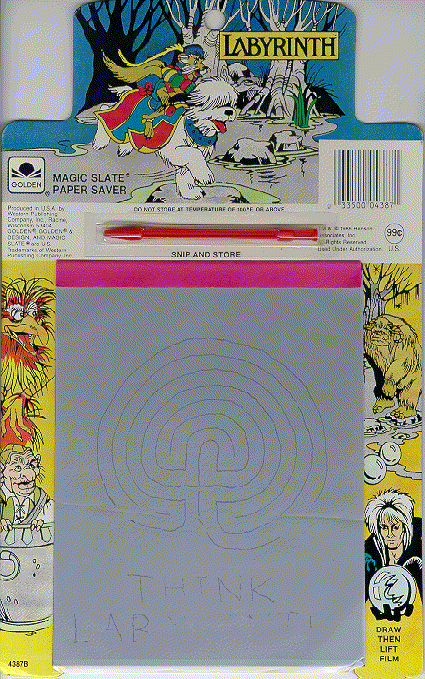Dirk Felleman has asked me to explain a little more why I say that objects dream. This is not simply a fanciful notion on my part. Objects dream. Here's how I got there.
First, let's look at the OOO side of things:
(A) There is very little ontological difference between what we call a mind does when it's thinking and what a pencil case does when it's holding pencils.
(B) Objects are what Graham calls vacuum sealed from one another. They never touch each other ontologically, only aesthetically.
(C) What goes on inside an object are all kinds of sensual impressions of other objects. Levi has this rather wonderful post on Uexküll's worlds in this regard.
Now let's consider what we know about the unconscious:
Freud argues that it's some kind of inscribable surface. He uses the analogy of the mystic writing pad. Derrida has a marvelous, McLuhan-like essay on it (“Freud and the Scene of Writing”) since Freud is in essence admitting that the unconscious is what he calls arche-writing, namely, a technological device that subtends meaning.
When you use a mystic writing pad, you erase the wax paper, but the impression of the writing stays on the wax tablet beneath. Script is inscribed in an object. Think of your hard drive. Not much different.
There are some interesting physiological theories of memory to throw in here:
Or memories are distributed holographically, that is nonlocally, in interference patterns (Karl Pribram).
Or memories are inscribed directly into discrete locations in the body. This post of Dylan Trigg talks about that, in haunting prose (again) that makes you realize that these memory traces go beyond the lifespan of the body in question. It's beginning to be quite well accepted in contemporary medicine that we store traumas in our bodies.
So what do we have so far?
(1) Objects only comprehend sensual translations of other objects.
(2) Memories are inscribed on an object-like surface, of the body or of some more general unconscious, either locally or nonlocally.
Doesn't there seem to be something like a chiasmic link between these?
Now dreaming is a neurophysiological process in which memories are mixed with somewhat random neuron firings and a virtual experience of the world is lived through by the dreamer, who is often trying to make sense of the traumas (un-cathected objects) that have occurred to her. She feels her way around her interactions with other entities in a virtual space.
You can call the unconscious a mystic writing pad, because mystic writing pads themselves hold memories and impressions in a meaningful sense.
As tough to swallow as it might sound, then, I see no immediate obstacle to allowing for the possibility that objects—nonhumans, that is, including nonsentient nonhumans—dream in some meaningful sense.
Look at these lines of Shelley:
| Thou who didst waken from his summer dreams | |
| The blue Mediterranean, where he lay, | 30 |
| Lull'd by the coil of his crystàlline streams, | |
Beside a pumice isle in Baiæ's bay, | |
| And saw in sleep old palaces and towers | |
| Quivering within the wave's intenser day, | |
All overgrown with azure moss, and flowers | 35 |
| So sweet, the sense faints picturing them! | (Ode to the West Wind) |
The ocean is dreaming, writes Shelley. What is it dreaming of? A submerged city. The water laps around the sunken palaces and towers of Baiae. It tries to comprehend (see point A) these alien, withdrawn objects (B), in its ocean-centric, oceanomorphic way (C). These human structures that now rest within its domain are strangers in the ocean's world—Shelley conveys this strangeness by alluding to Shakespeare's The Tempest: “Full fathom five thy father lies, / Of his bones are coral made.”
It's a marvelous image of how consciousness is never simply a neutral container, a void. It's colored, it quivers. Look at the typical Shelleyan inversion of “the wave's intenser day.” More blue than the blue of the sky. More sky-like than sky.
An image of phenomenological sincerity. (“Wherever you go, there you are.”) But also an image of an object wrapped in another object. An object that accesses another one by dreaming about it.
My title is the projected title of an OOO event I'm hoping will somewhat spontaneously form around David Reid, shaman of Nottingham.

No comments:
Post a Comment